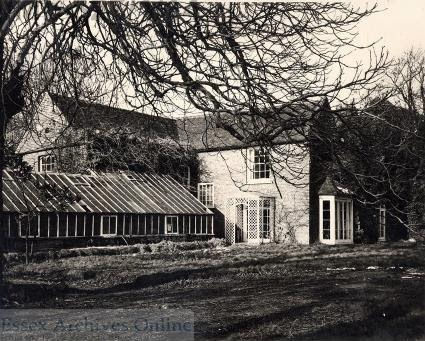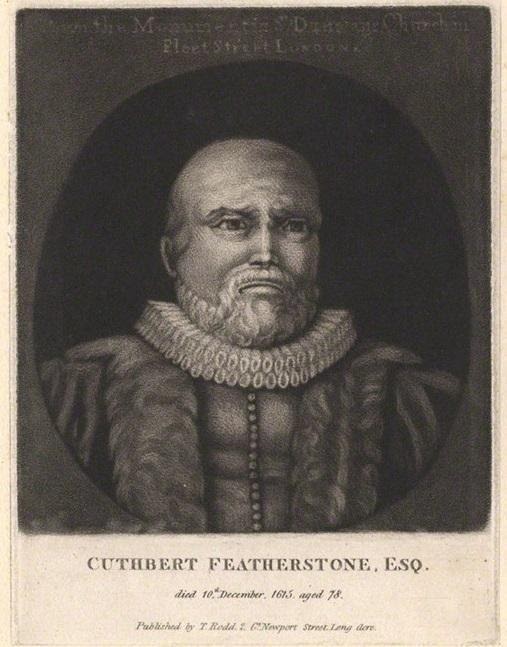The Manors
Hassingbrook was the principal manor of the area. The manor house itself still exists about three quarters of a mile north of the parish church and near to the stream of the same name.
After Turold and Ralph the manor passed to the Montchensy family who also held estates at Hanningfield and Halstead. William de Montchensy and his heirs held the manor from 1255. In 1313 the manor was inherited by Adomare de (of) Valence son of Lady Joane de Valence sister of William de Montchensy. Adomare de Valence who had married three times, died in 1324 leaving his third wife Mary de St Paul as possessor of the manor. Mary remained a widow for 53 years dying in 1376.
Adomare de Valence had two sisters, Isabel and Elizabeth. Isabel was married to John de Hastings and Elizabeth to Gilbert Talbot whose family inherited the manor. The last of the Talbot family in possession was Sir Richard Talbot who inherited in 1389, dying in 1419. The manor passed to Reginald de Gray, Lord Gray of Ruthyn son of Roger de Gray and Elizabeth, daughter of Isabel and John de Hastings.
Hassingbrook Manor. Hassingbrook Manor House in 1972. The building was later damaged by neglect and vandalism
It is likely that as a result of a long and very public dispute in the Court of Chivalry between Reginald, third Lord Gray of Ruthyn and Edward Hastings as to the right of succeeding John de Hastings, Earl of Pembroke, which Gray won, that the manor was held of the King from 1434 by Richard Rede and his wife Alice. Richard Rede died in 1436 and was succeeded by his cousin Robert Rede who held the manor until 1457. Reginald, Lord Gray of Ruthyn ‘a valiant knight’ died in 1440 and as a result of his winning the dispute with Hastings, his grandsons, Edmund and Thomas were later able to pass the manor to William Wetenhale a citizen and Alderman of London.
It must be remembered that these families would be what are now described as the great and the good. The gentlemen of the Gray family for example were distinguished knights and soldiers. Reginald’s son John who predeceased him and who was the father of Edmund and Thomas fought valiantly at the battle of Agincourt which took place on 25th October 1415. They were the owners of great estates in other parts of the country as well as Hassingbrook.
William Wetenhale took possession of the manor in 1457, the year of the death of his father who was also named William. William was described as a grocer and was the owner of substantial commercial properties in London. In addition to the manor of Hassingbrook he also held the manor of Fange (Vange) and the advowson of the churches by the King ‘in capite’ “by the service of one silver needle at the price of 2d.” The Manors of Hassingbrook and Fange had for long been associated and in the possession of the same families.
‘In capite’, abolished by the Tenures Abolition Act of 1660, was a tenure held directly of the King. An advowson conferred the right for its owner to nominate a person to an ecclesiastical benefice. A silver needle would have been an object of rarity in those times as it would have been the product of a skilled craftsman who would guard the secrets of his trade.
William Wetenhale died in 1468 at the age of 34 leaving an infant son also named William as heir to his estates. These estates were held in trust by Roger Ross, the King’s tailor also by the service of one silver needle. The third William obtained a licence to sell the manors of Hassingbrook and Fange in 1488 but these sales did not materialise and the estates remained with the Wetenhale family until 1554 when George Wetenhale, gentleman, of East Peckham, Kent, finally sold the manor by fine to Richard Champion of Godalming, Surrey, and his wife Margaret.
Richard Champion was a draper in London, Sheriff of London in 1530 and 1558 and Lord Mayor in 1565 being knighted in the same year. He died in 1568 leaving no heir so the manor of Hassingbrook passed to his nephew also named Richard who died in 1599 leaving a son and heir again named Richard.
The manor of Hassingbrook was subsequently purchased by Cuthbert Featherstone, gentleman usher and trusted friend to Queen Elizabeth I and usher and cryer of King James I. Cuthbert and his wife Katherine were living in Chancery Lane, but conditions in London at the time were poor, hence their move to the Essex countryside.
Cuthbert was a descendant of the Featherstonehaugh family which was of Saxon origin and came from Heatherye Cleugh in Northumberland where a large tract of land was allotted to an ancestor after the Norman Conquest. The family later split into two branches one branch subsequently taking the name of Featherstone.
Cuthbert and Katherine embarked on a major rebuild of Hassingbrook Hall around 1607 and it became their principal residence. Cuthbert died in 1615 at the age of 78 and Katherine in
1622 at the age of 85. They were married for over 40 years and had five children one of whom, their second son Henry, was married twice, first to Mary Newman and second to Katherine Heneage, daughter of Sir Henry Heneage one of Queen Elizabeth’s ministers. Henry’s marriage to Mary produced no children but by Katherine he had a daughter Grace and a son and heir Heneage born in 1628.
Cuthbert Featherstone who purchased Hassingbrook Manor in 1605
As with most of the nobility and landed gentry, Heneage joined the Royalist cause during the English Civil Wars and was created Baronet of Blakesware, Hertfordshire in 1660, the year of the restoration of the Monarchy under Charles II.
The decade of the 1660s saw two major disasters. In 1665 the great (bubonic) plague killed almost one third of the population of London, mostly the poor, and was followed by the devastating fire of 1666. Heneage was appalled by the loss of life and the destruction wrought by the plague and the fire and decided to invest in the reconstruction of the city. This reconstruction proved very successful and Heneages’s wealth grew rapidly.
In 1650 Heneage had married Mary Bennet eldest daughter of Sir John Bennet of Babraham, Cambridgeshire and they had ten children the second eldest of whom was their son and heir Henry, their first son having not survived. Lady Mary Featherstone died in 1710 at the age of 77 and Sir Heneage the next year at the age of 84.
Henry Featherstone had grown up witnessing the plague and great fire and after having had a privileged education he added substantially to his inheritance by investing in property. Henry
married Anne Marie Williamson who unfortunately died in 1692 whilst carrying their first child. Henry remained a widower and did not therefore have an heir for his vast estate which included Hassingbrook manor. As most of his siblings were also deceased, Henry looked to his family for an heir to take over his business interests. He sought out Thomas Featherstone of Heatherye Cleugh, the original home of his great grandfather Cuthbert. Thomas came to live with Henry but his heart had already been lost to a local girl Sarah Caine and he returned home. Henry was desperately disappointed and went back again to Heatherye Cleugh where he found Matthew Featherstone. Matthew was wealthy in his own right and lived in Featherstone Castle which he had purchased back from the Earl of Carlisle. He had a son also named Matthew who had been born in 1711 and was therefore the right age to become Henry’s heir. Matthew came to live in London with Henry around 1743 at the age of 32. In his will of 1745, Henry left the vast majority of his estate to Matthew and some upper estimates of the value of this estate, including his vast landholdings come to some sixteen million pounds, an enormous sum for the time.
Sir Henry Featherstone died in 1746 at the age of 92. The same year, 1746, Matthew married Sarah Letheuiller and was created a baronet. Matthew and Sarah bought Uppark in Sussex in 1747 and undertook a major renovation of and extension to the old mansion with their son Harry being born there in 1754. In 1771 Sir Matthew bought Abbots Hall Manor in Stanford and added it to his estate. He died in 1774 and Sarah in 1788. Their son and heir Sir Harry was one of the country’s wealthiest men and was catch for any lady although he did not marry until the age of seventy one in 1825 when he married Mary Ann Bullock the daughter of Uppark’s park keeper who was 51 years his junior. Despite their age difference Sir Harry and Lady Mary apparently lived happily until his death in 1846 at the age of 92.
In 1799 Sir Harry had decided to sell his estates in the Stanford area and James Scratton of Snaresbrook and his wife Judith Scratton nee Kersteman purchased both Hassingbrook Manor and Abbots Hall Manor from him. The Scratton family were living at Prittlewell and after James’s death, at Gosfield near Halstead, Essex. James Scratton left his property to his son John who with his wife Elizabeth had four children John; Elizabeth; Ellen; and Edward. In
1891 the younger John Scratton re-leased Hassingbrook Hall Farm to farmer Thomas Worrin Blyth first let to him in 1849, and who was resident there with his family at the census of that year. John willed the property to his unmarried sister Elizabeth for her security with the caveat that she was still unmarried at the time of his death, thus in 1892 on John’s death Elizabeth, who was then aged seventy one, inherited the property. She died in 1901 and her death began the break up of the estates that had been held for so many years by the Featherstone and Scratton families.
The land continued to be farmed until the early 1970’s but the encroachment of housing estates built on former agricultural land such as Moore Place and Abbots Hall Farm and the construction of new roads across the estate made agriculture increasingly unviable and Hassenbrook Hall, as it had become and its farm land was sold for housing development. After being badly neglected for some years the Hall was thankfully saved from demolition after a planning appeal recognised its historical significance and it has been extensively restored by the current owners and functions as a hotel. It is listed grade 2 by Historic England. The garden wall now facing Dunstable Road is separately listed grade 2.

